Horse-drawn rails
It’s a lovely little badge, nice in shape, and cute with peeking horses on it. One would not even think of how much the four-legged helpers were needed in the Great War. It had been said before that the cavalry had already been largely descended from horses at the beginning of the war. The “walking” of the riders was necessary not only because the infantry was needed in the trench warfare, but also because horses were needed to move all kinds of material on the large front lines. The hind horses were also caught in front of tows.
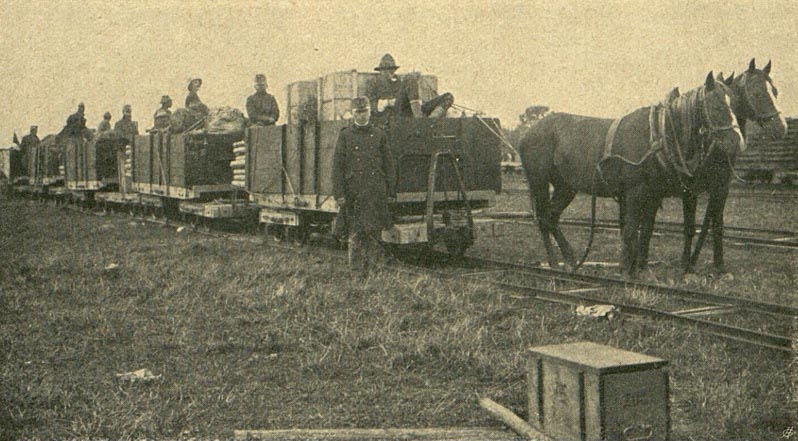
The horse-drawn carriage also fit into this line. It is a well-known fact that at this time, metropolitan public transport was still largely done by horse-drawn railways. The trams have just appeared. But an even more interesting fact is that already before the outbreak of the Great War, horse-drawn trains were intended to play a role in warfare. This is evidenced by a regulation issued in 1910, which describes the structure, material and human requirements and operation of special units. This is surprising because in the wars until then, the opposing parties were mobile, so in theory it didn’t make much sense to build a fixed railways for military purpose. Obviously, there may have been exceptions, such as the logistical solutions for large-scale fortification systems typical of the age.
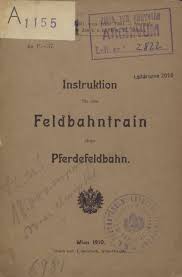
The badge was made by Gurschner. So far, I’ve only seen your specimens in this tombak design. The enclosed card is also decorated with the image of the badge and is quite rare.
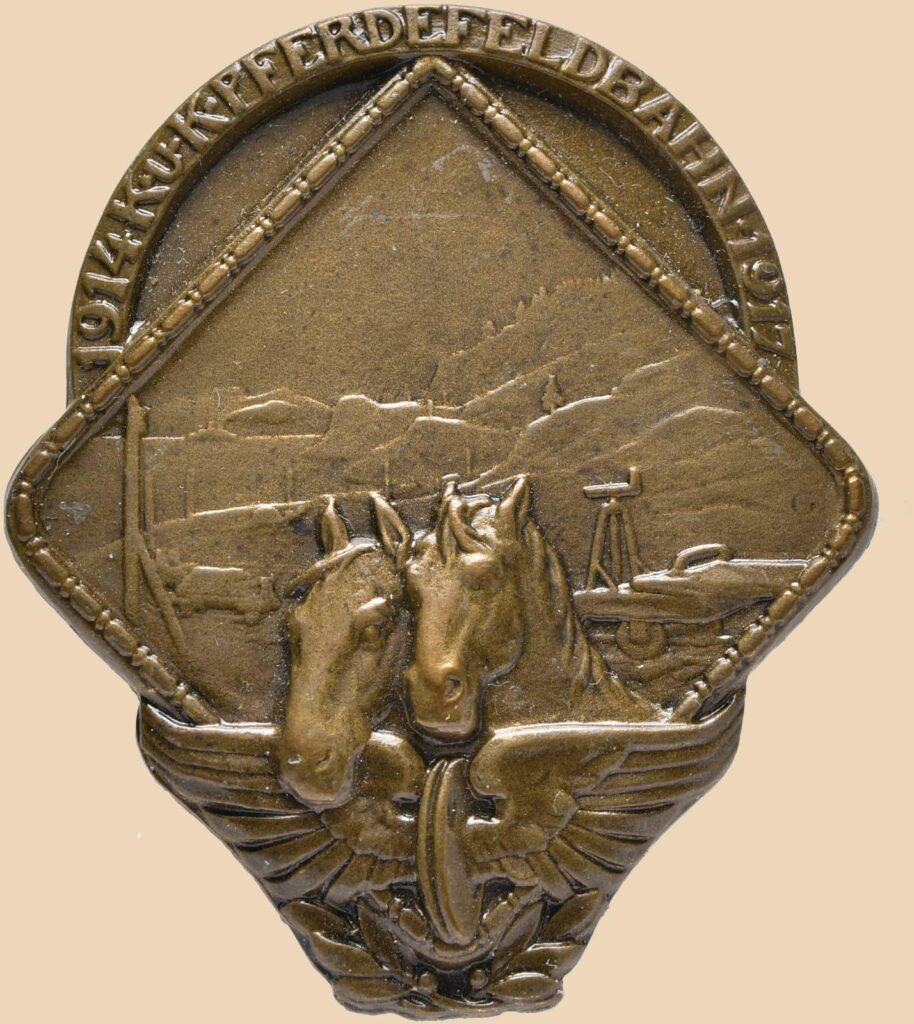

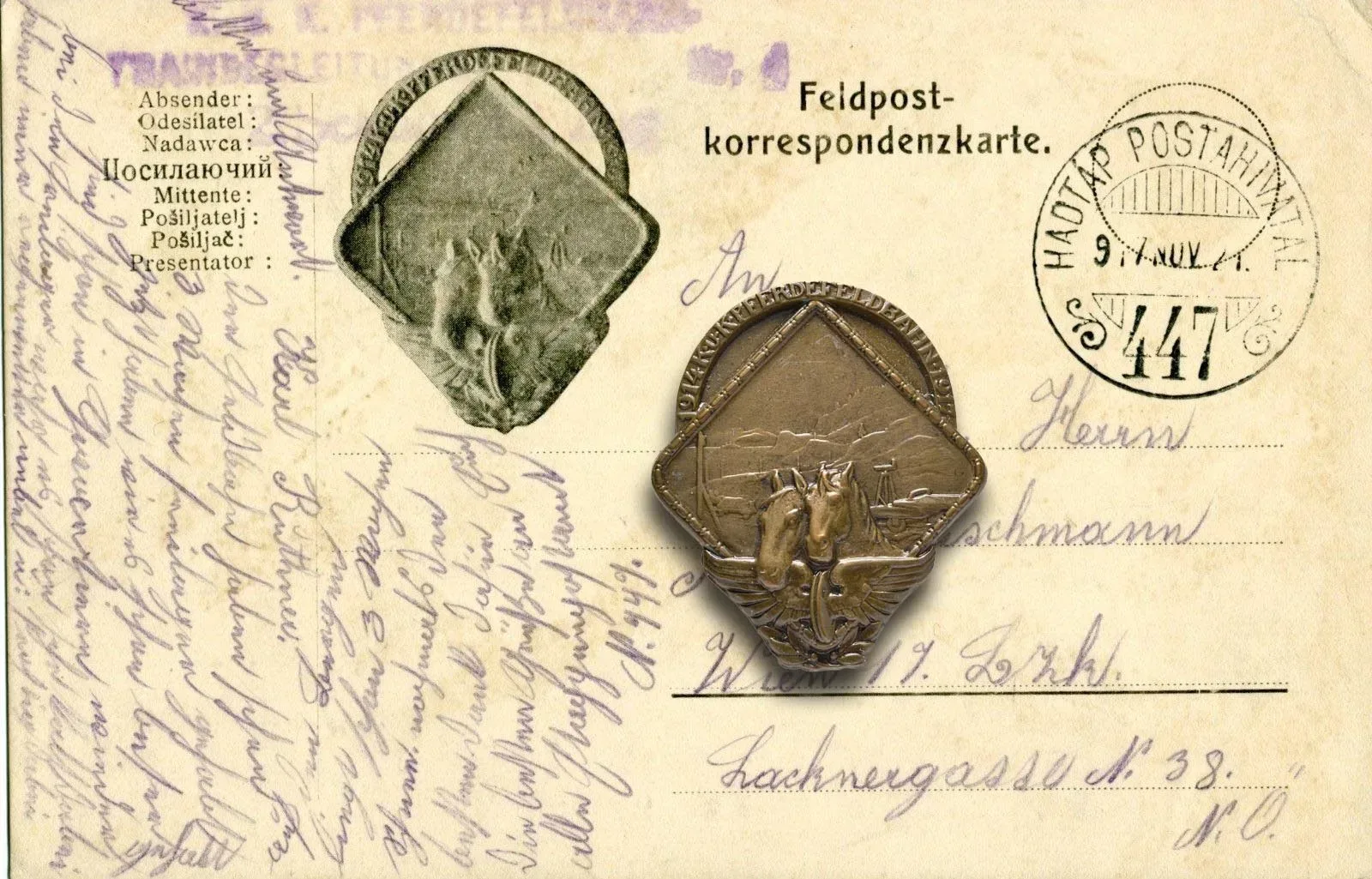
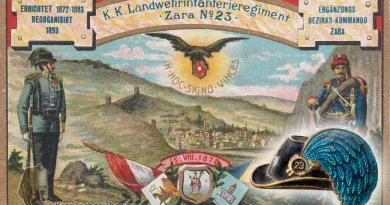


Once I seen also a “micro” specimen of this badge made of silver, a very little badge with no needle in the backside.
Thank you Luigi! Many badges had smaller versions, quite often made of silver. I did not know that this badge also was prepared in smaller version.